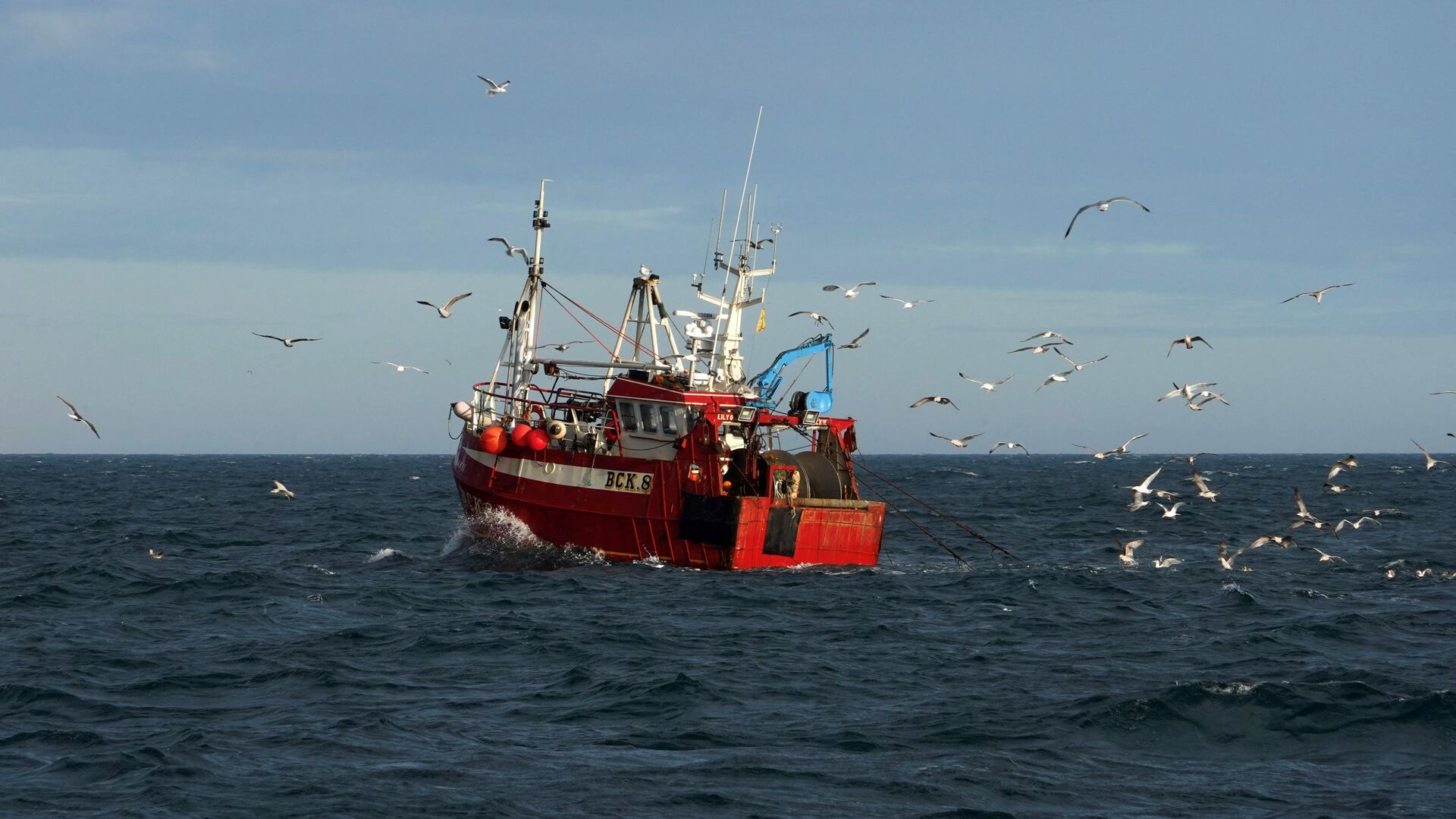Bitter Fishing Feud Flares Up Between Iceland and Norway

© AFP 2023 / WILLIAM EDWARDS
Subscribe
Despite being no more than 20 centimetres long, the capelin, a little fish at the heart of the fisheries row between fellow Nordic nations Norway and Iceland, is one of the most important species in the North Atlantic, with a lucrative worldwide market.
A major fishing dispute has flared up between Iceland and Norway, both major fishing powers.
The row involves the capelin, a small fish with great market possibilities. Capelin roe is considered a delicacy in Asia and Russia and the fish is widely used in the production of fish oil. Furthermore, it is essential as food for Atlantic cod.
This year alone, as much as 900,000 tonnes of capelin will be fished in sea areas off Iceland, a quota shared by fishermen from Iceland, Norway, Greenland and the Faroe Islands.
Of this, Norway has received a quota of 145,000 tonnes. However, while Iceland, alongside parts of the Danish Realm, is allowed to fish for capelin with trawls, Norwegian fishing vessels are forced to use seines. Trawls, or “bags” that go along the seabed, are said to give a major advantage, especially in high seas.
Of this, Norway has received a quota of 145,000 tonnes. However, while Iceland, alongside parts of the Danish Realm, is allowed to fish for capelin with trawls, Norwegian fishing vessels are forced to use seines. Trawls, or “bags” that go along the seabed, are said to give a major advantage, especially in high seas.
“It's depressing. Bad weather has been a challenge. In addition, it has been difficult to catch capelin with nets because the fish are deep in the sea. It is impossible to understand why only Norway's share of 16 percent of the total quota must be taken into account. It may seem as if Iceland is putting sticks in the wheels for us”, Bjarne Haldorsen of the company Liegruppen told national broadcaster NRK.
Furthermore, Norwegian fishermen are banned from certain areas in which Icelanders and others can fish. A ceiling has also been set on 30 Norwegian vessels allowed to fish in the same field at the same time. Lastly, Norwegian vessels are only allowed to fish until 22 February, while the other nations are allowed to fish until April. Haldorsen compared this with an “obstacle course” adding that Norway has no matching restrictions for Icelanders in its waters.
According to Audun Maråk of Fiskebåt, Norway's deep-sea fishing fleet's trade organisation, Norway has been asking for equal conditions, but Iceland won't budge. He called the current situation “unreasonable” and ventured that it must have consequences. According to him, Norway may respond with the same gesture and limit Iceland's fishing in the Barents Sea.
Norway's Fisheries Minister Bjørnar Skjæran, deputy leader of the Labour Party, has been in contact with his Icelandic colleague over this matter.
“As close neighbours, we should be able to find good solutions,” Skjæran told NRK, adding that Norway and Iceland have had a long and complicated history, which over the centuries has alternated between hot and cold. “We killed [Icelandic scald, poet and politician] Snorre [Sturluson] back in 1250. We probably should not have done that,” he added jokingly, referring to the man behind the Prose Edda, a major source of Norse mythology.
From the end of the 19th century to the 1960s, Iceland and Norway peacefully fished for a common herring stock. Subsequently, though, Icelanders had to switch to more remote waters and tried to fight for its rights in the zone around the Svalbard archipelago that belongs to Norway. Things heated up when the Norwegian Coast Guard to had to intervene and seize the Icelandic trawler “Hagangur”.
As of now, there is also a protracted dispute over Iceland's coastal state rights to fish mackerel that are currently opposed by Norway, the EU and the Faroe Islands.
